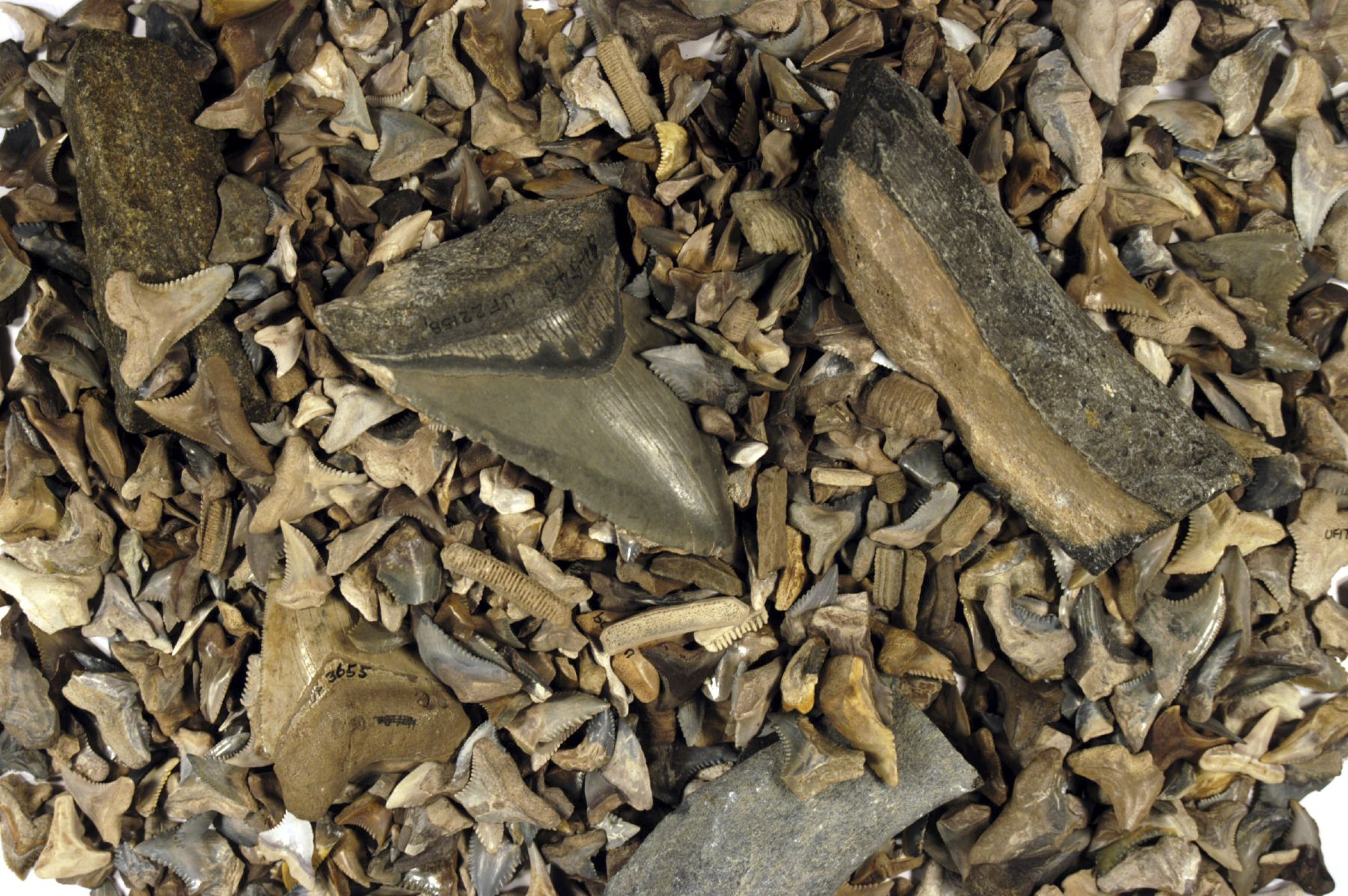Whether you’re a casual seeker or a passionate paleontologist, living in Florida puts a treasure trove of fossil shark teeth in easy reach. Here’s a few things to know if you want to try your luck.
1: You’re allowed to collect and keep fossil shark teeth.
While most vertebrate fossils and fossil sites in Florida are legally protected, there is such an abundance of shark teeth, they are specifically exempt from the usual fossil permit requirements.
2: You can find fossil shark teeth throughout most of Florida.
Parts of Florida have been underwater on and off for millions of years. Most fossil shark teeth are found in sedimentary rock where the layers were once at the bottom of shallow areas of the ocean. So a great deal of the state can potentially hold a shark tooth treasure.
Important: Be sure to only search for shark teeth on property you are allowed to be on though!
3: The best place to look is in creek beds or on beaches.
Because fossils are usually buried in sediment layers, water is your friend. It erodes the harder sedimentary layers and exposes the fossil shark teeth. The low tide line at beaches, and the edges and bottoms of creeks and rivers, are the best environment for eroding sediment.
Caution: although you might be free to pick up exposed shark teeth, digging to expose more layers of earth is often discouraged or prohibited on public land because it negatively impacts those environments. Know the rules when shark teeth collecting.

Florida Museum photo by Jeff Gage
4: Shark teeth treasures come in all sizes.
Finding a perfect giant megalodon tooth is a very rare event. But washing fossil-bearing sediment through a screen can reveal dozens to hundreds of perfect miniature shark teeth less than 1/5 inch tall. These will include adult teeth of small species such as the sharpnose, nurse and angel sharks as well as teeth from juveniles of larger species. This collecting method will also produce fossil teeth of stingrays, guitarfish and other shark relatives.
5: You can estimate the age of the tooth you find based on where you found it.
Although it’s hard to narrow down exactly how old your shark tooth find is, you can get an estimate based on the geologic age of the location you found it. The U.S. Geological Survey has great maps to help determine sediment age across Florida (and the rest of the United States, too).
- Learn more about fossil shark teeth.
- Read about other Florida fossils & fossil permits.
- Learn more about Florida fossil species and sites.